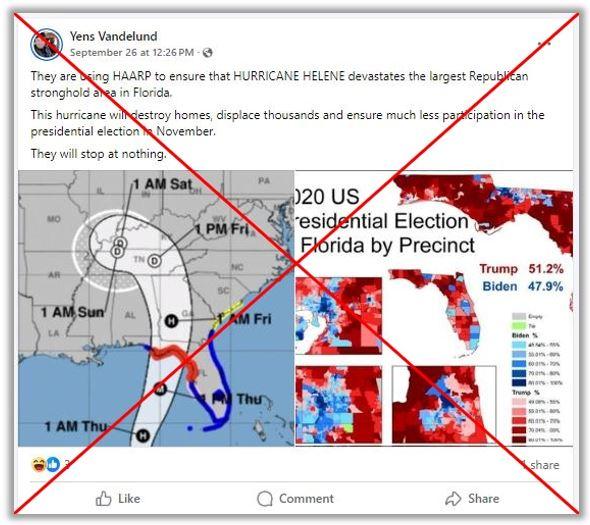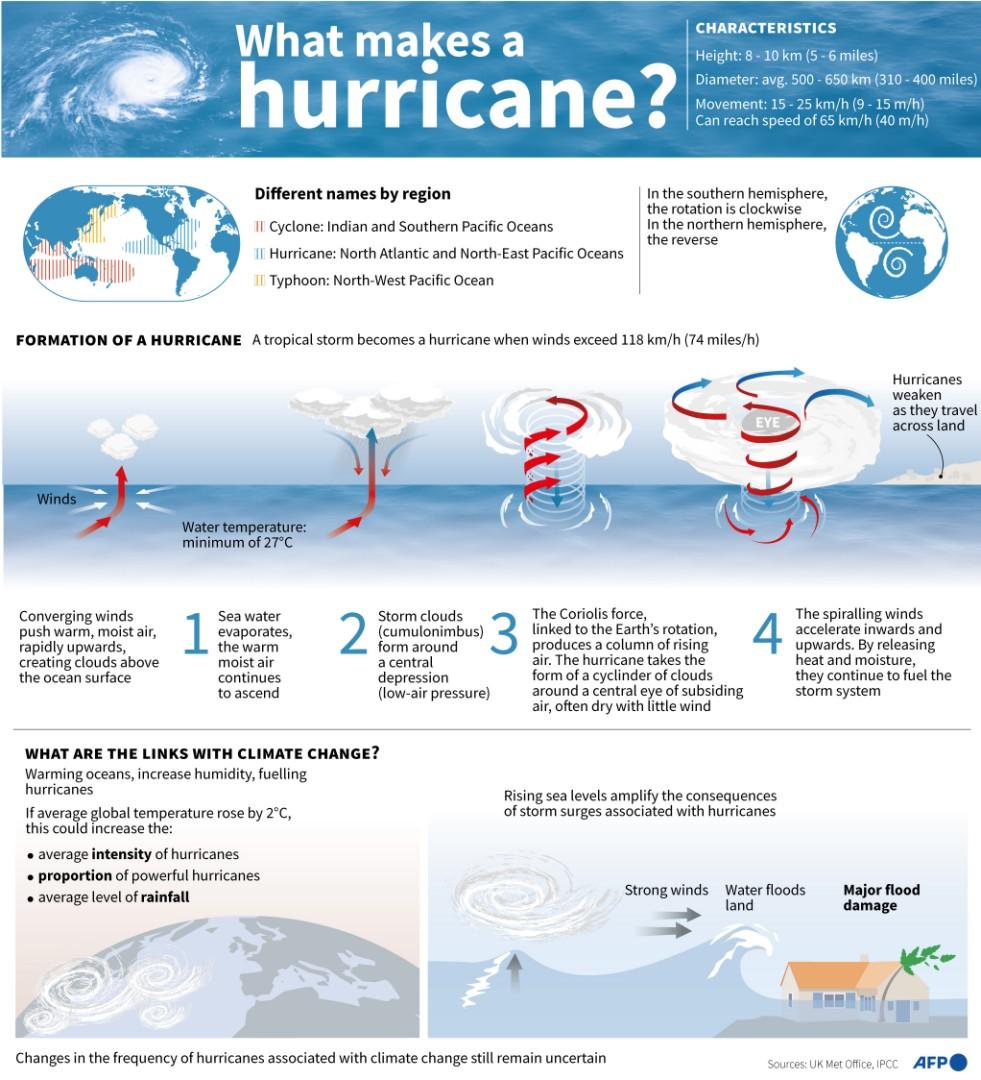Posts falsely blame HAARP research project for Hurricane Helene

- Published on October 1, 2024
- By Natalie WADE, AFP USA
Copyright © AFP 2017-2024. Any commercial use of this content requires a subscription. Click here to find out more.
"They are using HAARP to ensure that HURRICANE HELENE devastates the largest Republican stronghold area in Florida. This hurricane will destroy homes, displace thousands and ensure much less participation in the presidential election in November," says a September 26, 2024 Facebook post.

Screenshot of a Facebook post taken September 30, 2024
Screenshots of the claim spread elsewhere on social media. The X user who originally aired the allegation admitted September 28 that it was a "troll post," only to share a similar claim two days later.
Helene made landfall September 26 on the Florida Panhandle as a massive Category 4 hurricane, stranding residents, destroying homes and knocking out power for millions of people. The National Weather Service warned of "catastrophic and potentially life-threatening" flooding as the storm headed inland, and the death toll climbed to at least 130 on October 1.
The disaster electrified an already tense election campaign, just five weeks from the final match-up between former president Donald Trump and Vice President Kamala Harris. Trump quickly accused the Biden administration of inaction, alleging political bias.
"He's lying," President Joe Biden responded September 30, citing the White House's ongoing response to the devastating storm (archived here).
HAARP uses the world's most powerful high-frequency transmitter to study the physical processes at work in the highest regions of the atmosphere. It has long been the subject of conspiracy theories -- including claims that it can manipulate the weather.
The latest allegations are similarly baseless.
"The tragic loss of life and widespread devastation caused by Hurricane Helene serve as a solemn reminder of the immense power of natural disasters. The research equipment at the HAARP facility is not capable of generating or amplifying such events," HAARP Director Jessica Matthews (archived here) said in an October 1 email.
Howard Diamond, director of the Atmospheric Sciences and Modeling Division at the National Oceanic and Atmospheric Administration Air Resources Laboratory (archived here), concurred.
"HAARP had absolutely no connection to the formation of Hurricane Helene, the formation of any other hurricane, or the genesis of any other natural weather event for that matter," he said in a September 30 email.
The University of Alaska Fairbanks has operated the program since 2015, when it was transferred from the US Air Force (archived here).
"Radio waves in the frequency ranges that HAARP transmits are not absorbed in either the troposphere or the stratosphere -- the two levels of the atmosphere that produce Earth's weather," the initiative says on its FAQ page (archived here).
"Since there is no interaction, there is no way to control the weather."
How hurricanes form
Global weather patterns are responsible for large-scale storms such as blizzards and hurricanes, which require specific atmospheric conditions to form.
"The genesis of Hurricane Helene, as is the case for any hurricane, formed on its own given the right conditions of sea surface temperature and upper atmospheric winds," Diamond said.

(AFP / Cléa PÉCULIER, Sophie RAMIS)
Ella Gilbert, a meteorologist at the British Antarctic Survey (archived here), previously told AFP that "heatwaves, droughts, storms and floods are all caused by a variety of different conditions in the atmosphere and are often the result of the random combination of weather events."
She said it "makes no sense" to raise the idea that technology is bringing about such extreme events.
Although the 2024 Atlantic hurricane season has been less busy than predicted (archived here), scientists say climate change and warmer-than-average ocean temperatures have likely played a role in the rapid intensification of storms.
Florida voters affected by Helene
The Florida Department of State told AFP it is working with county election officials to address damage to infrastructure and polling places, poll worker safety and availability, and mail-in ballots.
"The Florida Department of State will continue to follow up with supervisors throughout this time as their needs evolve," an agency spokesperson said in a September 30 email.
The state has taken steps to ensure ballot access after past storms.
Florida Governor Ron DeSantis issued an emergency executive order following Hurricane Ian to change election procedures and expand voting options for those displaced or otherwise affected ahead of the 2022 midterms (archived here, here and here).
More of AFP's reporting on misinformation about the 2024 US election is available here.
No comments:
Post a Comment